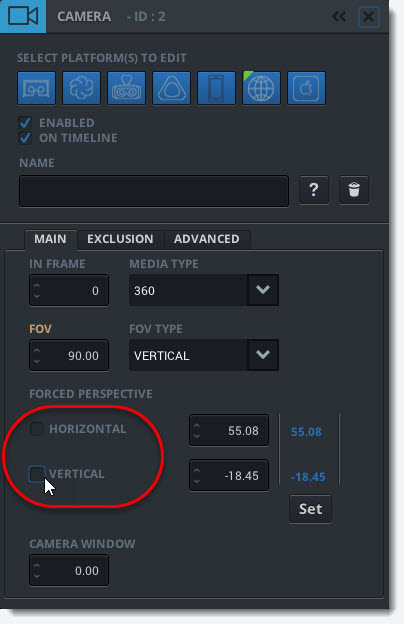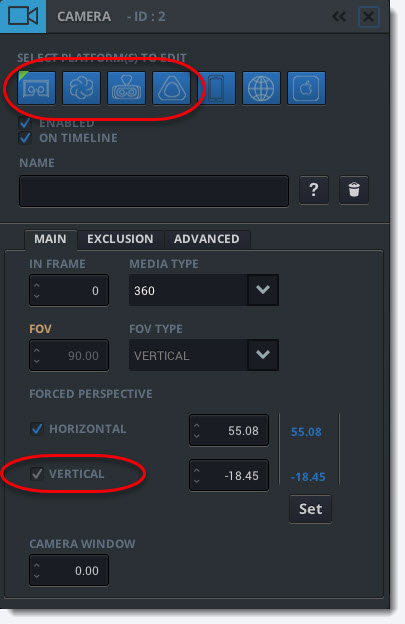What is Forced Perspective?
Forced Perspective means that at any given frame Liquid Cinema allows you to set the view that you would like your audience to see. Every cut is a fresh opportunity to redirect the viewer’s attention based on what you the author want the audience to see. When the video plays back the player will force this view on the cut no matter where the viewer was looking before. Forced Perspective is completely invisible to the viewer. They have no idea it is happening and yet their viewing experience is constantly optimized at every cut.
What Forced Perspective does is bring something back to cinematic VR that was thought to no longer exist in 360 film: The Film Frame. Thanks to Forced Perspective filmmakers can frame their shots again. The viewer still has the ability to look around everywhere but every cut is an opportunity to redirect their attention without knowing it and making sure they see what the filmmaker wanted them to see.
Getting the frame back means that we can cut to a new 360 shot where we are guaranteed to have an object or character enters the field of view of the viewer a few frames later. Or we can be sure that a pivotal piece of action that unfolds very quickly is never missed again.
You can also cut together full 360 material with materials shot on camera setups that are less than 360 degrees, such as 180 or 220 rig and be sure that when you cut to that shot that you will not see the black edges of it.
Once you get used to being able to use Forced Perspective you will never want to work without it again. VR filmmakers who have used Liquid Cinema have told us that it seemed to them it was almost impossible to tell a story properly without Forced Perspective and that not having it meant a lot of wasted narrative space.
We agree and we think that Forced Perspective is destined to become part of the permanent grammar of cinematic VR.
To fully understand it, it’s best to see it in action. Press the button below to launch a demo player that plays the a video with and without forced perspective.
TIP
You can author Forced Perspective using the Camera Event Editor

